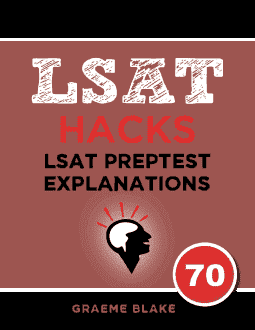This is an explanation for passage 2 of LSAT preptest 70, the October 2013 LSAT. This passage is about Katherine Dunham, a dancer and an anthropologist. Dunham studied the dances of the Caribbean and introduced some of their techniques to North American dance.
This section has paragraph summaries and an analysis of the passage, links to the explanations for the questions are below.
Paragraph Summaries
- Dunham’s training as a dancer and researcher let her bring dance-isolation to mainstream North American dance.
- Before Dunham, social scientists neglected dance because they didn’t consider it scientific, and because they lacked training in dance.
- Dunham researched the African origins of Caribbean dance. Against the advice of colleagues, Dunham took part in the dances herself. This let her understand them, and learn the techniques.
- Dunham created performances using the styles she learned. She managed to include African-American themes in modern dance.
Analysis
In a passage with multiple viewpoints, you should know what each side says, and who the author agrees with.
On one side we have the stodgy, traditional social scientists. Probably, they were white males, though this isn’t indicated. The social scientists neglected to study dance (second sentence of the second paragraph), they advised Katherine Dunham not to dance (third sentence of the third paragraph), and they couldn’t dance (third sentence of the second paragraph). Losers.
The social scientists had a very formal approach. They thought dance wasn’t “scientific”, whatever that means. They also thought that an anthropological researcher should stay strictly separated from the people she was studying.
The Author Supports Dunham
In the second half (“and because”) of the third sentence of paragraph 3 shows that the author believes the social scientists were unrealistic in thinking that detachment is good or even possible. The passage also implies that the author agrees with Katherine Dunham’s methods, and thinks that Dunham learned valuable things by dancing with those that she studied.
Dunham was a researcher and a dancer. This combination was unique (third sentence of the second paragraph). As you surely know, dance is a practical skill – it requires training and practice. The author implies that to understand dance, you must be able to do it. Dunham’s background in both research and dance thus gave her the ability to study Caribbean dances and their African origins.
Dunham Was Unique
I mentioned in the third sentence of the second paragraph. They are particularly notable since they suggest that Dunham was the only person trained in both dance and social science – no one else was qualified to study the dances the way that she did.
Paragraphs 1-4 talk about the results of Dunham’s work. Her achievements were very impressive for a researcher. Normally researchers study things, but they do not do things. Dunham did many things. The first paragraph shows that she introduced a completely new technique to North America and Europe. The next time you watch a music video, see if you notice one of the dancers moving one part of their body in isolation. It would seem that’s thanks to Dunham!
Dunham Changed Dance
The final paragraphs show that Dunham was able to create theatre performances that set the stage for the wider inclusion of African-American themes in North American dance.
This isn’t in the passage, but Katherine Dunham was African-American herself. She’s worth googling, she was as influential as this passage suggests. She even starred in a major Hollywood movie, at a time when it was very rare to feature African-Americans as leads.
You could sum up the main point of the passage as: “Intrepid researcher-dancer defies backwards, traditional ideas about anthropology. She dances with her research subjects, and uses what she learned to make a lasting impression on North American dance.”


“Losers.” Hahaha I’m dead XD
Awesome explanations-been reading your site for a while and it has been massively helpful in my prep for the December LSAT, especially for RC. Just wanted to say thank you!
-Roy
PS: As a quick note, for this passage, it is mentioned that she is African American (lines 2-3).
Oh thanks. I will fix that shortly. Glad you like the explanations!